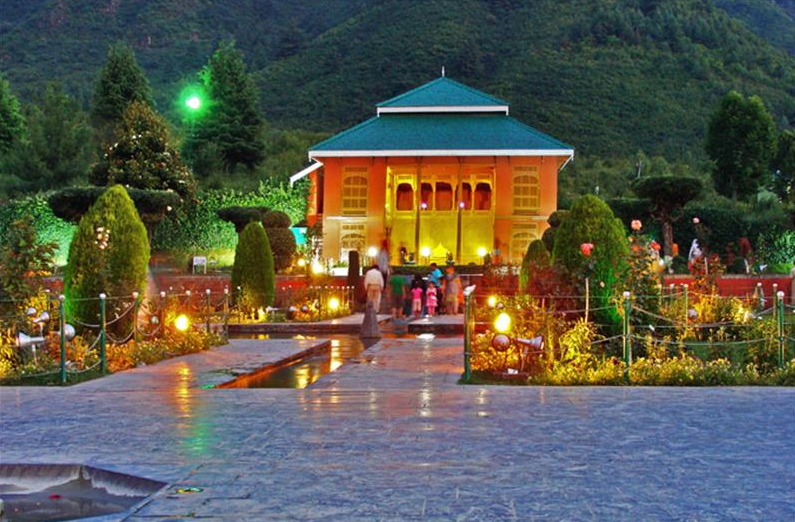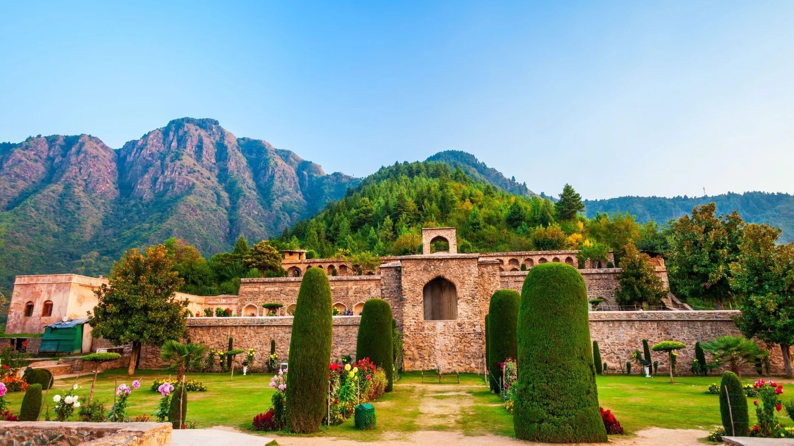Srinagar
Srinagar: City of the Dal Lake

The famous city of Srinagar lies around the beautiful Dal Lake. It is also known as the summer capital of Kashmir with waters of Jhelum gushing through it. It is a city with a distinctly central Asian flavour; referred to as ‘returning to India’. Thes old city in the vicinity of Hari Parbat Hill and includes the labyrinth of alleyways, mosques and houses that constitute the commercial heart of the city. These more morden part of the is farther up the Jhelum River (above its seven bridges). Which sweeps through Srinagar.

Raja Pravarasen built the in the 6th century. Its name has several possible derivations: Suryanagar (the City of Surya, the Sun god) or Srinagar – fortunate or even ‘beautiful’ city. Despite the name, the beauty of Kashmir has never been reflected in that of its main town. This place is at once a collection of images: a son at Lumiere that tells the story of love of the Mughal emperors for this paradise vale; deep green rice fileds and river bridges of garden in bloom and lakes rimed by houseboats; at once summer capital of the state, business centre and holiday resort. Srinagar is as much imagination as it is fact for every season offers new vistas to this coty of great antiquity. Spring breathes life again into a frozen world and the air is heady with the fragrance of a million flowers that blossom on trees, shrubs and creepers.
Srinagar is a unique city because of its lakes- the Dal, Nagin and Anchar. The river Jhelum also flows through the centre of the city.
The Dal, Srinagar’s largest lake has the most number of houseboats followed by the Nagin and the Jhelum. As a general rule , housesboats in the Dal are of all categories from deluxe through to D class, while those in the Nagin are largely economy class. This however is a generalization. Most houseboats on the Nagin and the Jhelum are sitduated on the banks of the lake and can be accessed directly from land without the help of a shikara, while all those on the Dal require a shikara to get reach them.
A shikara ride is one of the most shooting, relaxing aspects of a holiday in Kashmir. It can take upon an hour to se the sights of the Dal. Visits to handicraft shops within the periphery of the lake; or a whole day trip to visit important city landmarks can be organized on the shikara because the Dal is so central to the landscape of Srinagar, many places of tourist interest have over the ages been built in its vicinity. Nishat and Shalimar gardens as well as Hazratbal mosque are directly accessible by a shikara.
Sightseeing
Hari Parbat Fort:

The hill of Sharika in the north- eastern part of Srinagar is considered sacred for Hindus. It is surmounted by an 18th century fort constructed by Atta Mohammad Khan an Afghan governor. The wall around the hill was built by Akbar in 1592- 98 AD. There are almond orchards which make a lovely sight. Permission to visit the fort is issued by the State Archaeological Department, Lalmandi Square. Legend suggests that this hill was once a lake as large as a sea inhabited by the abominable demon Jalobhava. The gods called on Sati Mata for help who taking the form of a bird dropped a pebble increased on size as it fell and crushed him. Hari Parbat is revered as that pebble and it became the home for all 33 crore gods of the Hindu pantheon.
Nagin Lake:

The Jewel in the ring, the smallest but the loveliest part of Dal Lake. Separated by a causeway and only a short distance from Hazratbal, its deep blue water encircled by a ring of green trees has been credit for its name. There is a club here and facilities included water-skiing and swimming.
Shalimar Bagh:

Built by Emperor Jahangir for his wife Nur Jahan: the gardens are distinguished by a series of tarraces linked by a water channel. These are surrounded by decorative pools, which can only be reached by stepping – stones. The uppermost pavilion has elegant black marble pillars and niches in the walls for flowers during the day and candles or lamps at night. Harwan runs through the middle of the garden.
Cheshma Shahi:

A tastefully laid garden in terraces with a spring of cool, refreshing digestive waters. The original gardens was laid out by Shah Jahan in 1632 AD. The Cheshma Shahi-Pari Mahal area has been developed into a tourist village. The garden are illuminated by night and command a magnificent view of the Dal Lake below and the surrounding mountain ranges.
Pari Mahal:

Once a Buddhist monastery, it was converted into a school of astrology by Dara Shikoh, the eldest son of Mughal Emperor Shah Jahan. It is situated on the spur of a mountain overlooking the Dal Lake. It has a well laid out spacious garden in front and is connected to Cheshma Shahi by road. It is illuminated at night.
Shankaracharya Temple:

One thousand feet above the city, the temple is located on a hill also known as Takht-I-Sulaiman. Most authosities agree that the first edifice on this site was built by Jaluka, the son of Emperor Ashoka around 200BC. The low enclosing wall and the plinth of the existing temple is what has remained of the old temple. The present structure the interior of which is 4.3 miter in diameter, is said to have been built by an unknown Hindu devotee during the reign of Emperor Jahangir. The temple offers a magnificent view of the valley and the snowy peaks of the Pir Panjal range.
Dal Lake:

This lovely lakes lies to the east if the city at the doot if Shrindhara mountain. The Shankaracharaya hill is to the south and Hari Parbat on its west. The lake is 6.3 kms and is devided by a causeway into four parts: Gagribal, Lokutdal, Boddal and Nagin. Lokutdal and Boddal each have an island in the centre, called Rup Lank and Sona Lank respectively. Rup Lank is also known as Char Chinri.

Стильные советы по выбору стильных образов на любой день.
Статьи экспертов, события, все показы и мероприятия.
https://biiut.com/read-blog/79584
Стильные советы по выбору необычных образов на каждый день.
Обзоры стилистов, события, все новые коллекции и мероприятия.
https://chutpatti.com/read-blog/33864
Бренд Balenciaga — это одним из самых известных модных домов, который был основан в первой половине 20 века испанским дизайнером Кристобалем Баленсиагой. Он славится экстравагантными стилистическими приемами и неординарными формами, противоречат традиционным представлениям о моде.
https://balenciaga.whitesneaker.ru/
I was just searching for this information for a while. After 6 hours of continuous Googleing, at last I got it in your site. I wonder what’s the lack of Google strategy that do not rank this type of informative web sites in top of the list. Generally the top websites are full of garbage.